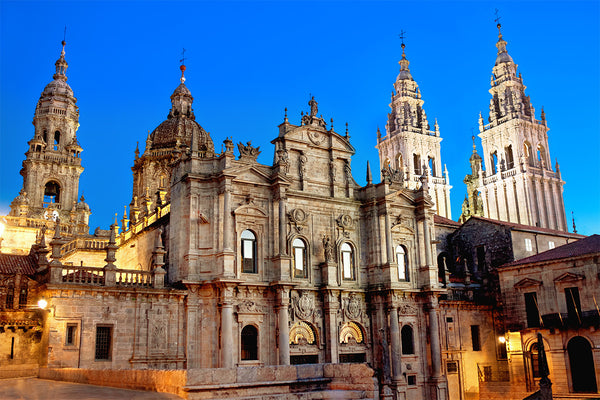
Camino de Santiago, Spain

Walking the pilgrim pathway to Santiago de Compostela, where the remains of St James the Apostle are said to be buried, is one of the oldest and most interesting journeys in Europe. The idea of pilgrimage touches a chord in many of us and pilgrims on the road to Compostela are as taken with the journey as with the destination. These days, pilgrimage is an exciting and challenging opportunity to leave the bustle of our usual lifestyle behind and touch something ancient and profound.
ROUTE
Spain's Camino Frances is one of the best known walks in Spain. This 750km walk takes you through the drier regions such as Rioja and Castile, then through to cooler Galicia. The traditional Camino begins in St Jean Pied-de-Port, crosses the Pyrenees to Roncesvalles. Then to Pamplona, Burgos, across the Meseta to Leon. Then through Ponferrada, O Cebreiro and through Galicia to Santiago de Compostela. The terrain is quite variable, taking you through warm flat regions to colder, wetter mountain ranges
ACCOMMODATION
Usually in refugios with mixed dormitories which cannot be booked in advance. Other options include pensions and hotels which we advise to book in advance. An efficient luggage transfer service is not readily available but can be organized through a number of tour operators on their ‘self-guided’ or ‘guided’ itineraries.
HIGHLIGHTS
Pamplona’s gothic cathedral, the pilgrim bridge at Puenta la Reina, cathedrals at Burgos and Leon, Templar castle at Ponferrada, Celt-Iberian village at O Cebreiro and the wonderful Obradoiro Plaza and cathedral at Santiago de Compostela.
GUIDEBOOK
The route is well marked, and it’s always advisable to take a map and guide book. Alison Raju wrote one of the original guidebooks ‘The Way of St James’, which is a useful book, with maps, route directions and accommodation suggestions. Our own Almis Simans also wrote an entertaining narrative, Santiago: Walking the Pilgrim Path, which combines track notes with history and legend. Find it here.
WHEN TO GO
The mildest temperatures are found between September and October, and the number of days required depends on how fit and how quickly or leisurely you want your walking holiday to be. Work out the average number of kilometres you are prepared to do in a day, taking into account the landscape and the town or village in which you will end your day. It's also nice to plan on arriving a little earlier in a town or city if there are interesting attractions you may like to visit, such as in Burgos or Leon.
GEAR
For a list of products that will help you survive the trek, check our dedicated gear list. Or to see the links to the actual products, look at our Camino de Santiago Collection. Need more advice? See which of our staff have been there on the Where Are You Going? page.






